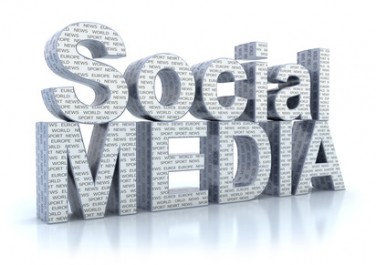 Bimbo Bakeries USA (bakers of the Thomas’ brand English muffins) and former senior vice president Chris Botticella are caught up in a trade secrets lawsuit.
Bimbo Bakeries USA (bakers of the Thomas’ brand English muffins) and former senior vice president Chris Botticella are caught up in a trade secrets lawsuit.
What’s at issue is this: Has – or will — Botticella reveal the secrets of manufacturing the famous English muffins to the new employer, Hostess, Inc.?
Bimbo Bakeries offers testimony from computer forensics that Botticella had “deliberately copied trade secret documents onto an external USB device moments before being escorted from (Bimbo) premises.”
This possibility of a trusted employee using electronic devices to divulge confidential information to unauthorized parties or competitors would never happen in your operation. Or would it?
The Bimbo Bakeries versus Botticella case doesn’t appear to involve use (or misuse) of social media. However, it’s a vivid incident reminding management that dangers and risks made possible by electronic devices are now even more likely in any business – even your own — because of increasing use of social media.
Consider this statistic: According to the 2010 Trend Micro, Inc. survey of corporate and small business Internet end-users, 50 percent of those surveyed admitted to revealing company confidential information data through an unsecured Web mail or social media account. Responses came from 1,600 end users in the United States, the United Kingdom, Germany and Japan. Results were announced in May. Mobile employees were more likely than desktop users to share confidential information, with 60 percent of mobile employees admitting to sending out confidential information compared to 44 percent of desktop users.
Another statistic: The 2010 Trend Micro survey also reported that about one out of 10 Internet end-users admitted to overriding their company’s security systems in order to access restricted Web sites.
Still more social media use facts:
* A security firm Proofpoint poll of IT professionals at the Infosecurity Europe show in London this year found 93 percent of those polled said they were “very” or “somewhat” concerned about the potential for confidential or personal information within their firms or organizations to get leaked by e-mail.
* A Proofpoint study in 2009, getting responses from more than 200 e-mail decision makers in U.S. firms, found eight percent of them reported the company had terminated an employee for using Facebook during work time.
* 24 percent of surveyed non-profit and government employers reported having to discipline an employee for his or her activities on social media sites like Facebook®, Twitter®, or Linkedin®. This result was from contacts with nearly 800 individuals in non-profit and governmental institutions surveyed in late 2009 by the Health Care Compliance Association and the Society of Corporate Compliance and Ethics.
* A high percentage of your employees probably believe whatever they do on the Internet and on social networking sites is one of their fundamental rights. That view is certainly reflected in a GlobeScan poll of 28,000 people in the United Kingdom in early 2010. In the polling, 87 percent of those who reported using the Internet said they believed it should be a “fundamental right.”
* By 2014, according to the research and advisory firm Gartner, Inc., social networking will replace e-mail as the primary way to communicate for 20 percent of business users.
With the facts like those above confronting employers it’s not surprising that employers are taking action to lessen the risks from employees’ Internet and social media use.
One example: The University of Iowa Hospitals and Clinics, in Iowa City, earlier this year announced it was blocking social networking sites and other Web sites in clinical workstations. The new policy is the result of concerns about patient privacy and assuring the proper use of the organization’s electronic and Internet resources.
The University of Iowa Hospitals’ chief executive, Ken Kates, in an e-mail to staff wrote: “… viewing inappropriate Web sites for nonwork-related purposes consumes employee time and organizational resources.”
Risks and dangers of social networking by employees. Little wonder that employers are grappling with the issues and challenges associated with employees communicating during work time through e-mail and social networking sites. Following are major risks and dangers:
* Disruption of productivity. Employees during work time communicating electronically on personal matters distracts them from their job performance, resulting in lower overall productivity and increased costs.
Example. This message was recently posted in “The Admin Pro Forum” e-letter: “I know my office co-worker chats on Facebook most of the day. I now have proof when another co-worker stopped by the office and mentioned that her posts are usually between the hours of 8 a.m. and 5 p.m… there are times when I am overwhelmed with work and I know she’s chatting on Facebook and not getting her work done.”
* Legal risks to the company or organization. Imagine the variety of views and images employees can disseminate by e-mail and on social media sites that can negatively affect their employers. An employee, using the employer’s computer and Internet connection can circulate defamatory information, sexually explicit statements and photos, and sexually harassing images through their social media sites and blogs. An employee can whip out insulting messages by e-mail to customers, damaging the employer’s reputation.
* Risks of damage to the company’s or organization’s reputation. An employee can instantly and thoughtlessly send out an insulting and embarrassing message by e-mail or post it on a social media site. The message gets seen – and reacted to – by hundreds, thousands of people. It can become a reputation-damaging smear difficult to contain and hard on the bottom line.
Example. Early this year a woman, Sarah, and her husband went to the theater in St. Croix Falls, WI, owned by a chain of seven theaters in Minnesota, South Dakota and Wisconsin. The woman brought enough cash for snacks. But the theater didn’t accept credit or debit cards for tickets and the lobby’s ATM was out of cash. So the couple’s friends wrote a check. Then because of attempts by some underage patrons to sneak into the R-rated movie, the theater staff spent up to 20 minutes disrupting the patrons by using flashlights to check ticket stubs.
Later the woman wrote an e-mail letter of complaint to the theater owners. The e-mail response she got from the company vice president read: “Go f*** yourself. If you don’t have money for entertainment, get a better job, and don’t pay for everything on your credit or check card. You can also shove your time and gas up your f****** a**.” Sarah posted the e-mail exchange on her Facebook page. It spread. And soon there was a “BOYCOTT St Croix Falls Cinema 8” page on Facebook with 5,082 members, more than double the population of St. Croix Falls.
* Intentional sharing of sensitive and/or confidential information. Disgruntled employees, on their own time and in their own home, can set up a Web site or blog site and begin to share an employer’s confidential and/or embarrassing information with the public.
Won’t happen with your employees? Think again. A recent survey of 2,000 adults, done by insurer Travelers Companies, revealed that 30 percent of respondents believed it was okay to post information about their employer online as long as they believe it is true.
* Inadvertent sending of sensitive and/or confidential information. An employee, preparing a sensitive financial report, can inadvertently insert a wrong e-mail address and whip the confidential message off to a customer or friend who has no right to know the information.
* Positives of employee social networking. There’s a flip side to the risks and dangers associated with social networking by employees. For some companies and organizations, in some workplaces, management may see advantages from employee social networking. Advantages like these:
o Supports a creative, innovative culture. Companies and organizations employing technologically savvy and creative people who are focused in their work on innovating and staying competitive will have a workforce that expects the freedom of social media, e-mail, and texting. An openness to the free flow of electronic communication for this workforce is necessary for keeping the company or organization on the cutting edge.
o Supports viral and other social media marketing. For companies and organizations using viral and social media marketing, permitting employees to responsibly engage in personal electronic communication during work time can help keep their electronic communication skills and knowledge in top form.
o Increases productivity. This stated advantage is based on a University of Melbourne study done last year in Australia. The study’s author, Brent Coker, called it a study of “workplace Internet leisure browsing” or WILB. The study of 300 employees found that 70 percent of them used the Internet at work for WILB. The researchers concluded that employees surfing the Internet for personal reasons during work were nine percent more productive than employees who did not do this.
In a blog explaining reasons for this seemingly paradoxical result, Coker gave two explanations.
1. “We need breaks in our workday… Concentration levels in the tasks we perform begin to wane fairly quickly after about an hour or so… WILB is (similar to a walk in the forest) an enjoyable activity, which enables efficient restoration of concentration.”
2. “Overwhelmingly, management research suggests that workers who feel they have a degree of freedom in the workplace perform better than those who feel they are stifled and not in control…”
o Makes the workplace more appealing. A workplace where employees are permitted to responsibly use electronic communication such as social media is attractive to young applicants and creative and innovative people of all ages. More and more employees are immersed in a culture where interacting with others through social media, e-mail, and texting is the norm.

As an IT consultant I am fully aware that IT management is struggling with whether social media is productive or obstructive for companies and their employees. Software is being developed and policy and restrictions are being decided everyday by IT managers. The security of company networks are at stake but the potential for innovation using social media is a large enough carrot for the discussion of how to properly utilize the medium continues. Palo Alto networks came up with a whitepaper, http://bit.ly/d2NZRp, which will explore the issues surrounding social media in the workplace. It is important to not only understand the immediate benefits of doing business how one lives, but the threat it presents to a company’s greater ROI and productivity when it comes to the server’s safety and security.
it was very interesting to read.
I want to quote your post in my blog. It can?
And you et an account on Twitter?
You are welcome to quote this post in your blog.
Thanks for sharing your thoughts on employee fraud. Regards